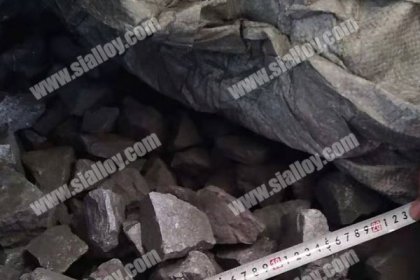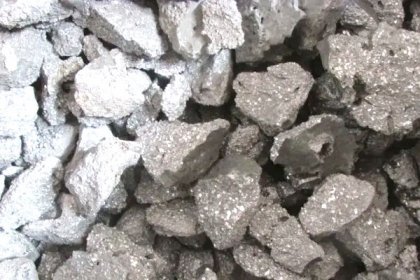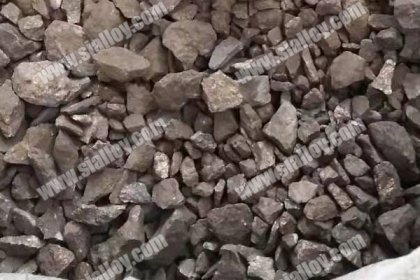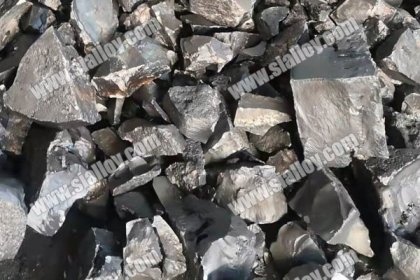ferro silicon aluminum ingot properties
As a deoxidizer and alloying element for steelmaking, aluminum plays a very important role. For many years, steelmaking has mostly adopted the method of adding aluminum cakes or aluminum ingots directly into the steelmaking furnace or ladle molten steel. High purity aluminum metal is used, which is not only costly, but the aluminum is oxidized by 70-90% of the oxygen in the air and slag, causing excessive aluminum burnout and large fluctuations in the amount of residual aluminum in the molten steel. Steel mills and research institutions have done a lot of work on improving the yield of aluminum and accurately controlling residual aluminum. As a typical representative of this aspect, the wire feeding method has been widely used in the fine adjustment of the residual aluminum content of the molten steel and supplementary deoxidation in the post-steel process. The basic principle is to control the depth of aluminum added to the molten steel and avoid aluminum, air and slag. Contacts of unstable components in the middle. The use of ferro silicon aluminum and other aluminum alloys for deoxidation has also been proven to be a very effective method, which not only greatly reduces aluminum consumption, but also more accurately controls the amount of aluminum added, and the content of non-metallic inclusions is also reduced. As a new composite deoxidizer in the past two years, ferro silicon aluminum has not only achieved significant aluminum savings (compared to pure aluminum) while ensuring the final oxygen content and mechanical properties of the same steel as pure aluminum. Aluminum 40-50%), and improve the pouring performance of some molten steel, and greatly reduce the phenomenon of nozzle nodules. In order to enable ferro silicon aluminum to be used as soon as possible, ferro silicon aluminum should be promoted as soon as possible as a deoxidizer to replace the original metal aluminum.When each element is deoxidized separately, it can be seen from the balance between the element content and the oxygen content that aluminum has a much stronger deoxidation capacity than silicon. At lower aluminum content, silicon can significantly improve the deoxidation capacity of aluminum. When the aluminum content increases to a certain value At this time, this effect disappears. At this time, the oxygen content is controlled by the aluminum content, and the silicon loses its deoxidizing ability. Ferro silicon aluminum alloy with 60% Si and 40% Al is used, and the composition of the deoxidized product depends on the amount of alloy added. The removal rate of deoxygenated products conforms to the Stokes Law, that is, the larger the size of the product, the more favorable it is for floating removal. Only on the premise that there is SiO2 in the molten steel, the Al2O3 generated when aluminum is added can combine with it to form a low-melting product and promote its floating removal. This shows that ferro silicon aluminum can ensure the occurrence of silicon deoxidation reaction, which is very important to improve the kinetic conditions of deoxidation.
Al2O3 and SiO2 are contained in nature and the raw materials available for smelting are quite wide. In addition to bauxite and silica, a variety of raw materials containing silicon and aluminum such as kaolin, silica residual stone, kyanite, coal ash, fly ash, etc. Both can be used to produce ferro silicon aluminum, and some unused bauxite with high iron content is more suitable. Of course, smelting alloys with high aluminum content requires ore with high aluminum content. From the perspective of strategic development, the use of other raw materials and even industrial waste to produce ferro silicon aluminum alloy is in line with economic principles.
 中文
中文




